




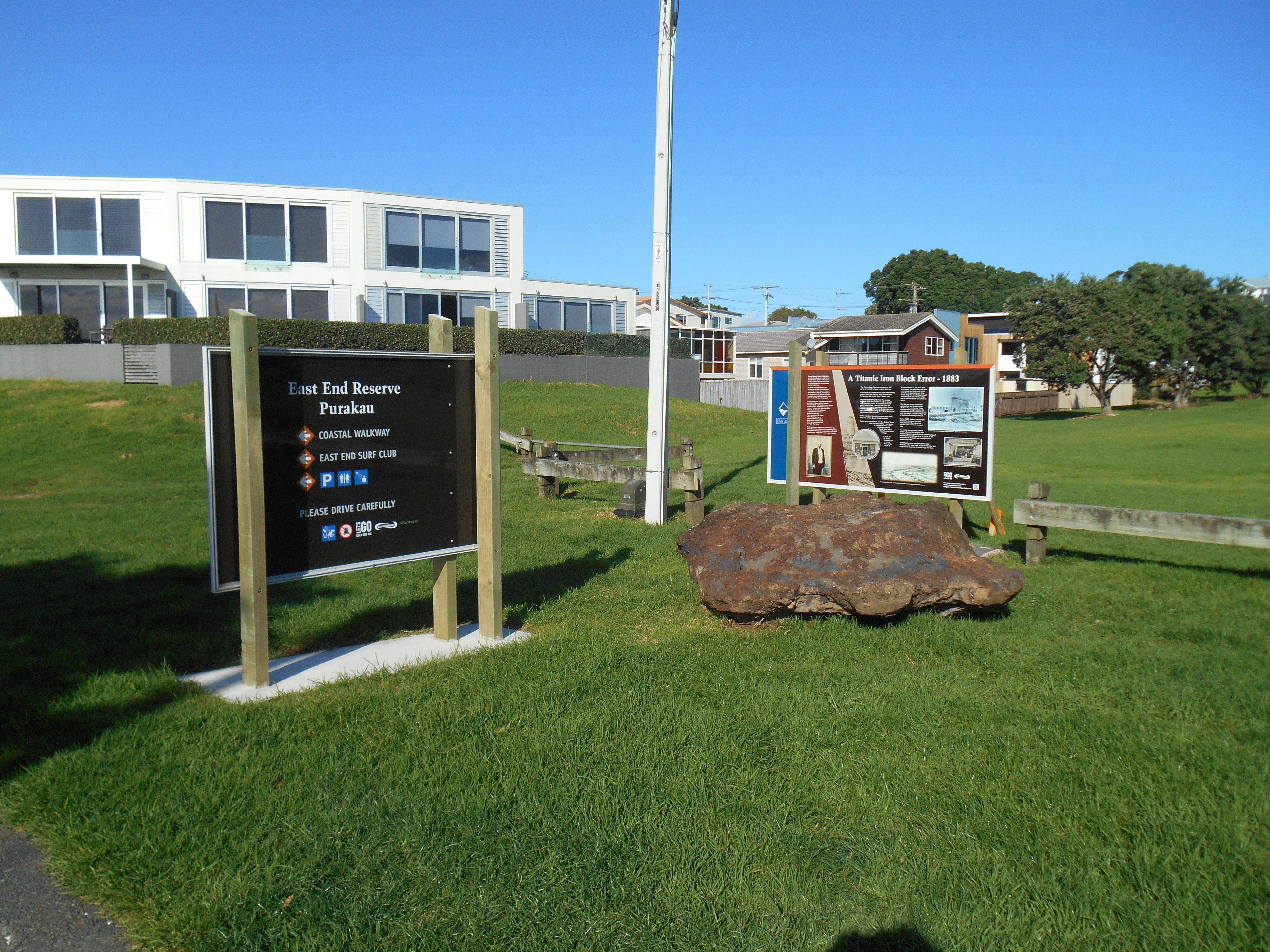
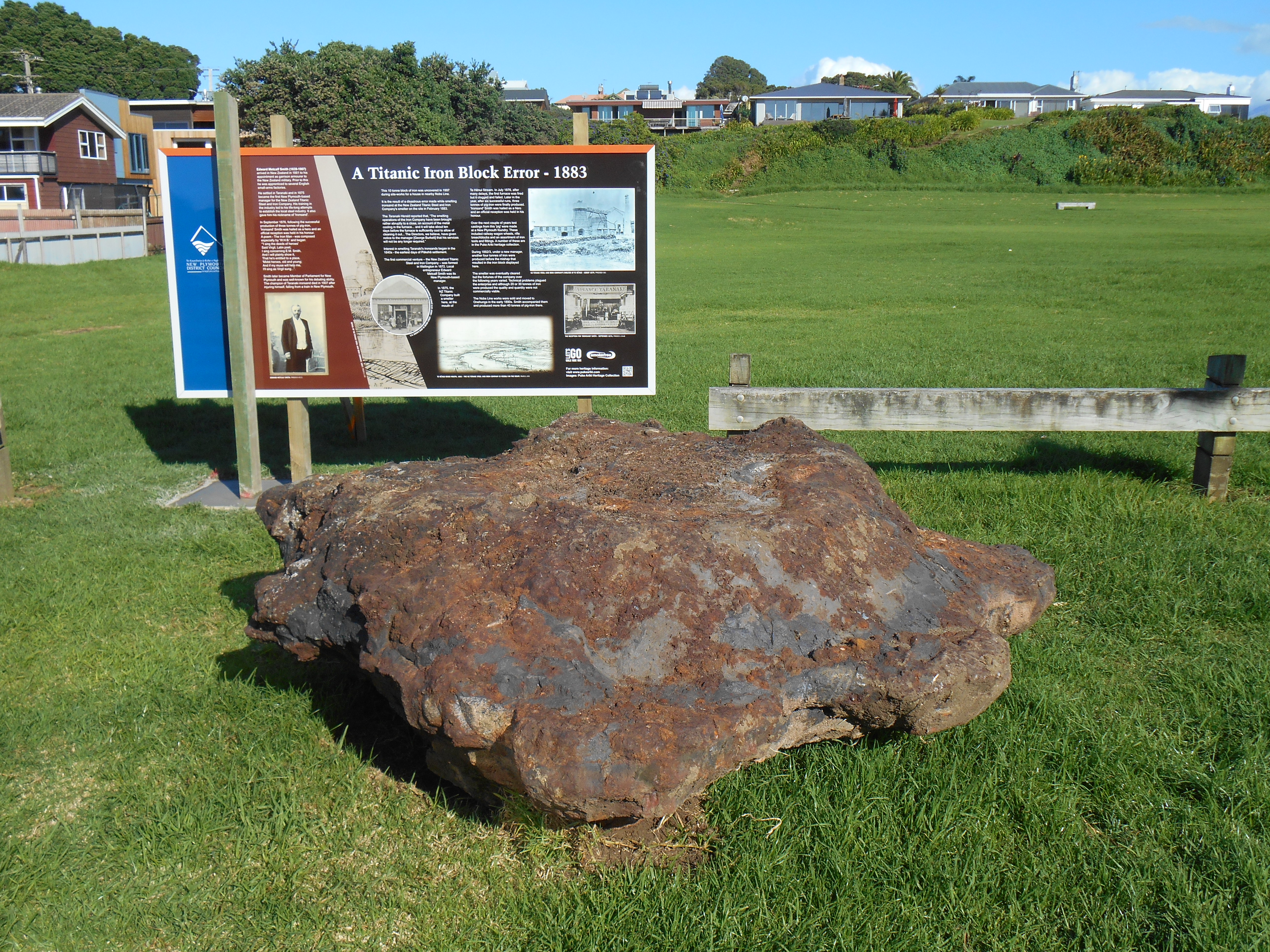
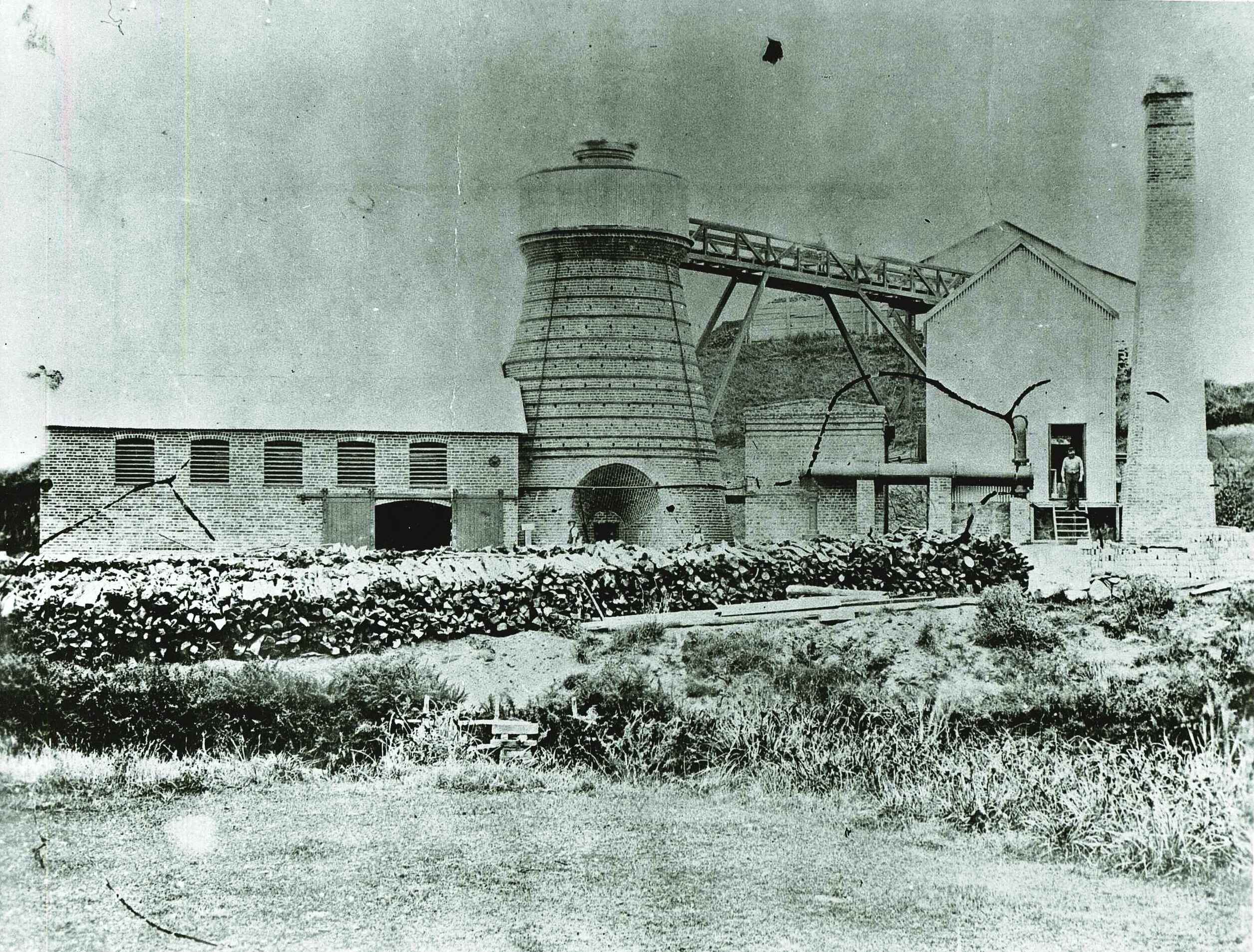
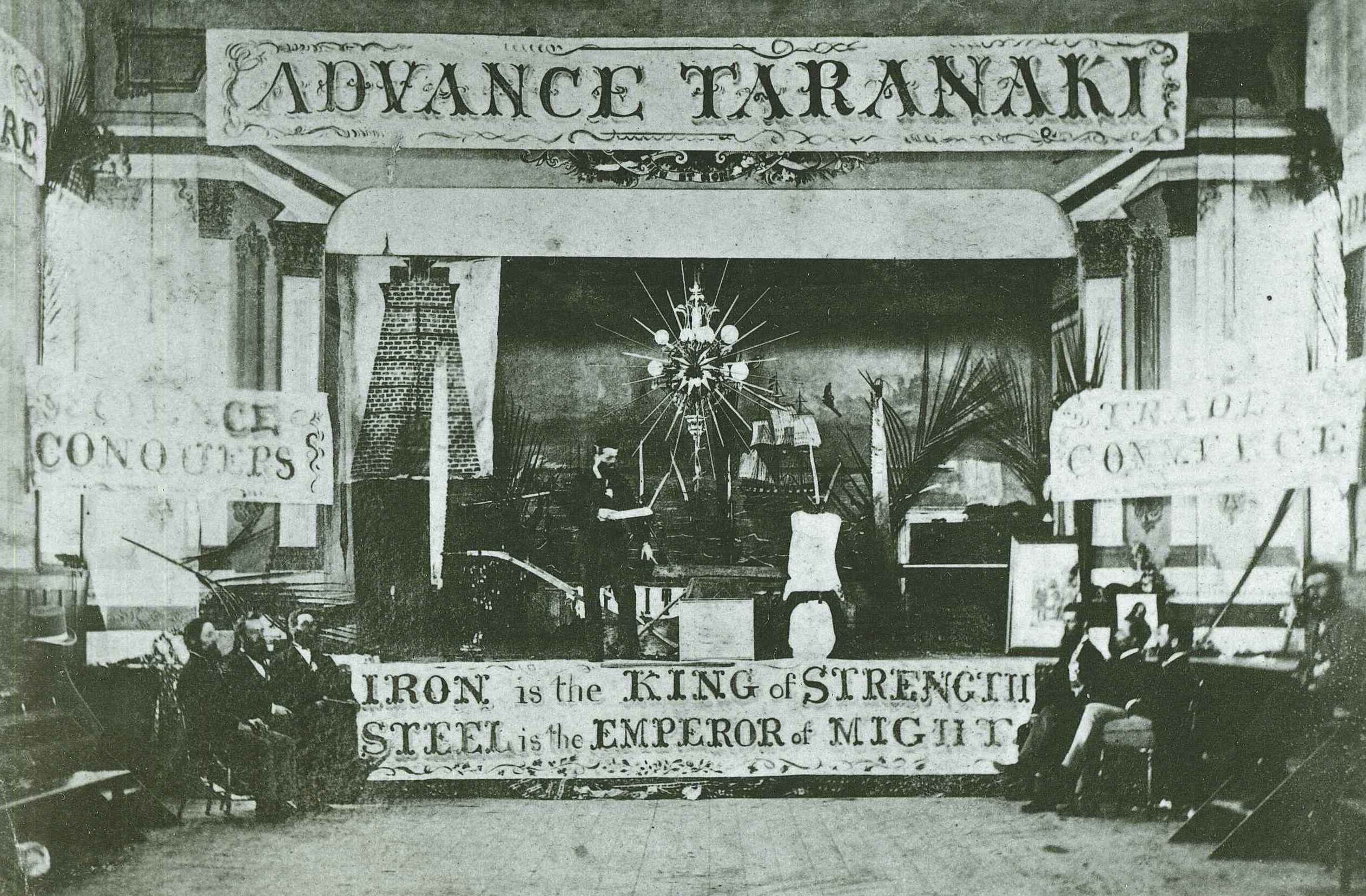
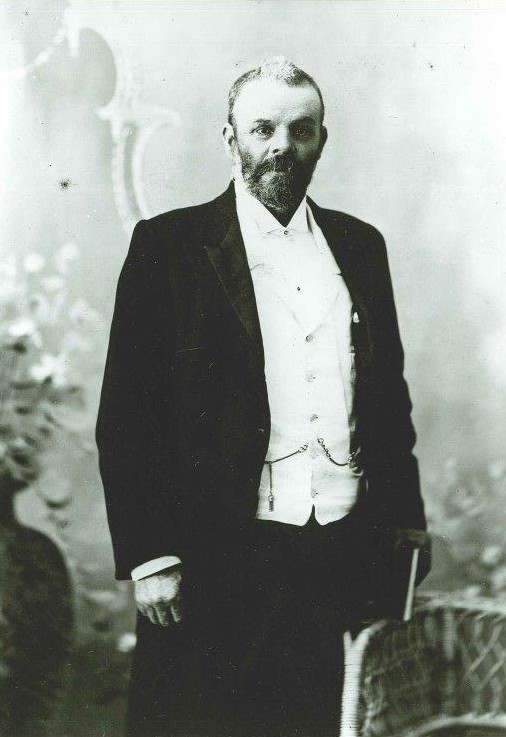
This 10 tonne block of iron was uncovered in 1997 at East End Reserve, New Plymouth, during site-works for a house in nearby Nobs Line. It is the result of a disastrous error made while smelting ironsand at the New Zealand Titanic Steel and Iron Company’s smelter on the site in February 1883.
The Taranaki Herald reported that “The smelting operations of the Iron Company have been brought rather abruptly to a close, on account of the metal cooling in the furnace....and it will take about ten days before the furnace is sufficiently cool to allow of cleaning it out... The Directors, we believe, have given notice to the manager [George Burkett] that his services will not be any longer required.” (Taranaki Herald, 2 Feb 1883)
Interest in smelting Taranaki’s ironsands began in the 1840s - the earliest days of Pākehā settlement.
The first commercial venture – the New Zealand Titanic Steel & Iron Company – was formed in Wellington in 1872. Local entrepreneur, Edward Metcalf Smith (1839-1907) was its New Plymouth-based manager.
Smith was apprenticed to several English small-arms factories before arriving in New Zealand in 1861 to his appointment as garrison armourer to the New Zealand military.
He settled in Taranaki where his training in the industry led to his life-long attempts to establish a local steel industry. It also gave him his nickname of ‘Ironsand’. Smith later became Member of Parliament for New Plymouth and Taranaki between 1890 and his death in 1907.
The Titanic company built a smelter at the mouth of Te Hēnui Stream in 1875. In July 1876, after many delays, the first furnace was fired but it clogged and failed.
Later in the year, after six successful ‘runs’, three tonnes of pig-iron were finally produced. ‘Ironsand‘ Smith was hailed as a hero and an official reception was held in his honour.
A poem - The Iron Man - was composed especially by ‘W.H.B.’ and began ...
“ ’I sing the deeds of heroes’
Said Virgil, Latin poet;
I sing concerning E.M. Smith,
And I will plainly show it,
That he's entitled to a place,
‘Midst heroes, old and young;
And if my muse will help me,
I'll sing as Virgil sung...........”.
Over the next couple of years test castings from this ‘pig’ were made at a New Plymouth foundry. These included railway wagon wheels, rifle breechblocks and an assortment of
iron tools and fittings. A number of these are in the Puke Ariki heritage collection.
During 1882-3, under a new manager, another four tonnes of iron were produced before the mishap that resulted in the iron block shown here.
The smelter was eventually cleared but the fortunes of the company over the following years varied. Technical problems plagued the enterprise and although 20 or 30 tonnes of iron were produced the quality and quantity was not commercially viable.
The Nobs Line works were sold and moved to Onehunga in the early 1890s. Smith accompanied them and produced over 40 tonnes of pig-iron there.
The champion of Taranaki ironsand died in 1907 after injuring himself falling from a train in New Plymouth.
Documents
Taranaki Ironsand Taranaki Herald 29 October 1921
Ironsand and Iron Will: The Story of Taranaki's Steel Industry by Ron Lambert
Please do not reproduce these images without permission from Puke Ariki.
Contact us for more information or you can order images online here.